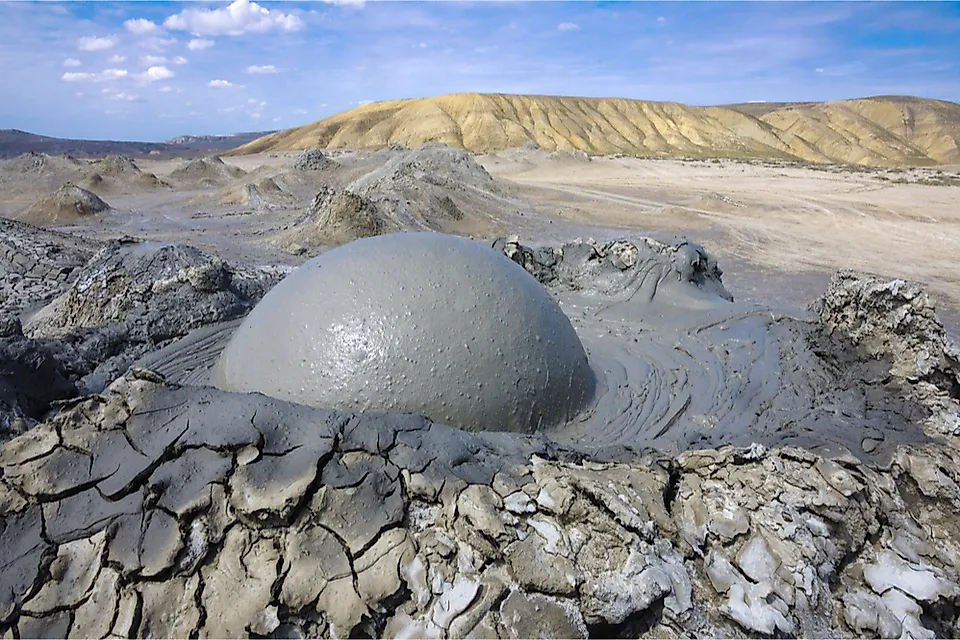What Is a Mud Volcano?

A mud volcano occurs when pressures deep within the Earth cause the spewing of mud, gases, and liquids, like acidic water, onto the surface. Eruptions are caused by the Earth’s tectonic forces or by the squeezing of sediments at the deltas of large rivers. A mud volcano occurs in subduction zones, when one of earth’s tectonic plate moves under another, causing it to sink due to gravity at their convergent points. Mud volcano eruptions usually release gases, especially large quantities of methane, and smaller quantities of nitrogen and carbon dioxide. A mud volcano can appear hill or mound shaped, and differs from traditional igneous volcanoes because no lava or ashes are produced.
Formation
Mud volcanoes can be man made or naturally occurring. Man made mud volcanoes can be triggered by mining or drilling for gas, which creates underground fault lines. When the soil deep within the Earth loosens in a process called decompaction, gases are created at a high rate. These gases cause mud to acquire buoyancy because there is more pressure in the mud than outside of the forming mud volcano, and mud gushes out of the Earth through vents and fractures. As this occurs, gases also gush as a way to relieve the pressure. This geothermal activity can also heat the underground water, which mixes with sediment to become mud. Steam from the heated water forces the mud out through fissures or vents onto the Earth’s surface.
Structure
Earth’s subduction zones, near petroleum deposit areas, and volcano prone regions are all places where mud volcanoes are likely to occur. Like conventional volcanoes, after eruption a mud volcano has a similar shapes and appearance. The gryphon is a cone with steep sides less than 3 meters in height and emits mud, while the mud cone is less than 10 meters and emits rock fragments, addition to mud. Scoria cones are also formed when mud emitted is heated during fires. Overall, mud volcanoes are smaller than conventional volcanoes.
Location of Mud Volcanoes
Azerbaijan has the largest number of mud volcanoes in the world. With a total of least 400, Azerbaijan has one-third of the world’s mud volcanoes. 200 of these are located within a range of a thousand kilometers area, and some have created temporary and permanent islands and submarine banks. The two biggest mud volcanoes in Azerbaijan are Turaghai and Boyuk Khanizadagh. However, the world's largest mud volcano is the Sidoarjo Mudflow, located in Lusi, Indonesia, which has a height of 2,300 feet and a width of 6 miles. This mud volcano has been spewing mud since May 2006, when it killed 14 people and displaced 25,000 in four square mile countryside. Scientists project the Sidoarjo Mudflow will continue for 25 years, and believe it may have been triggered by a 6.3 magnitude earthquake 280 kilometers away, which was recorded two days before the mud volcano began. Other large and notable mud volcanoes include El Totumo in Colombia, with a height of 50 metres, and the Chandragup mud volcano in Pakistan, with a 450 foot wide crater. Trinidad and Tobago, Turtle Islands in Philippines, California, and Eastern Venezuela are other countries or regions with mud volcanoes.











